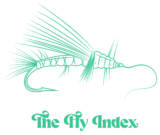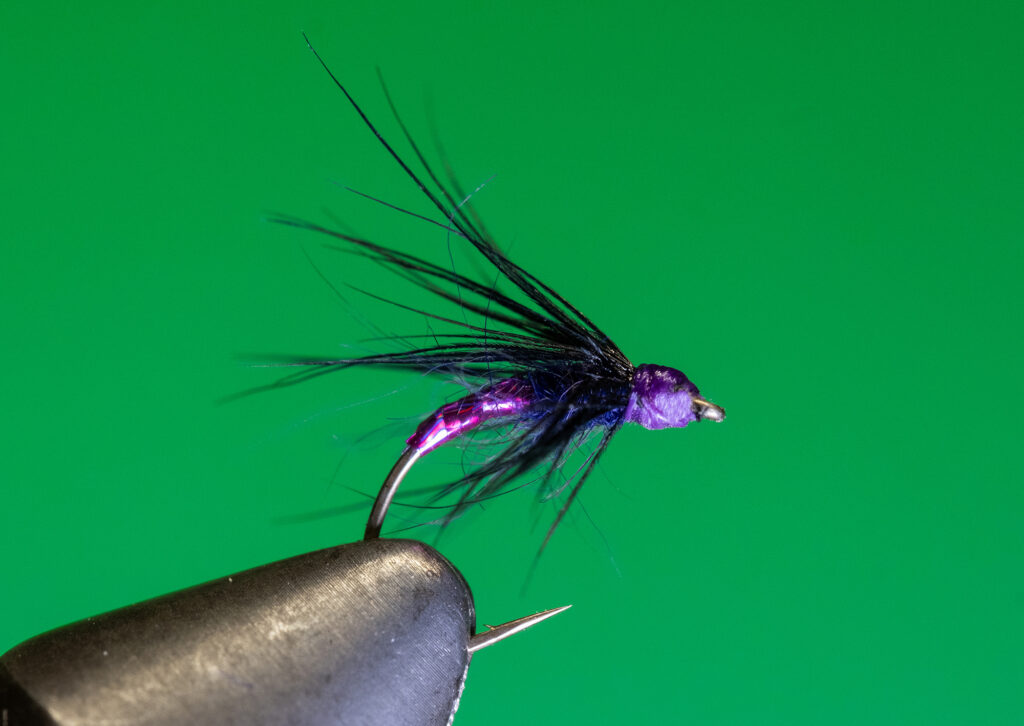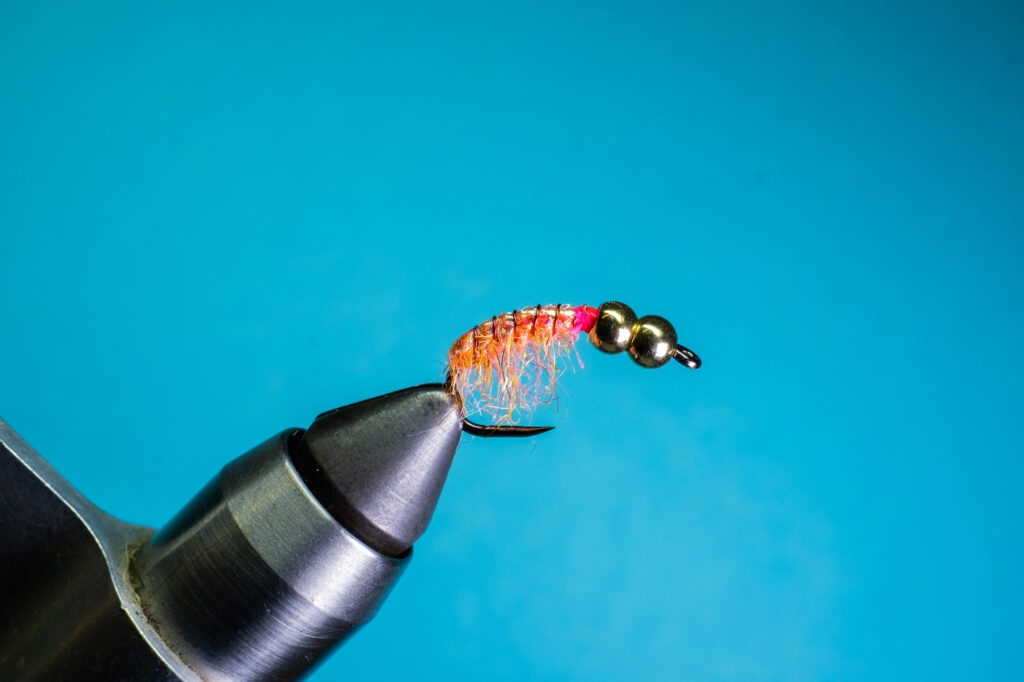Olive Scud
This is just one of many variations of a scud pattern. Here I use olive and hare’s ear dubbing, with an olive scud skin and mono for the segmentation. A brown permanent marker on the top of the scud back adds some realistic coloration. These are super successful in spring creeks where there are lots […]










